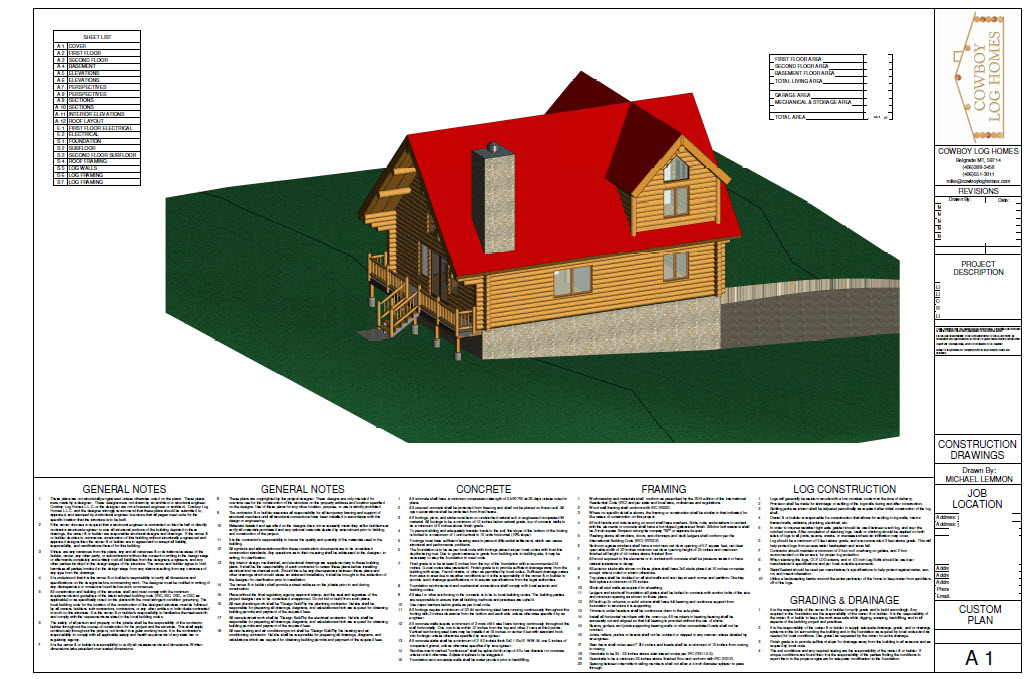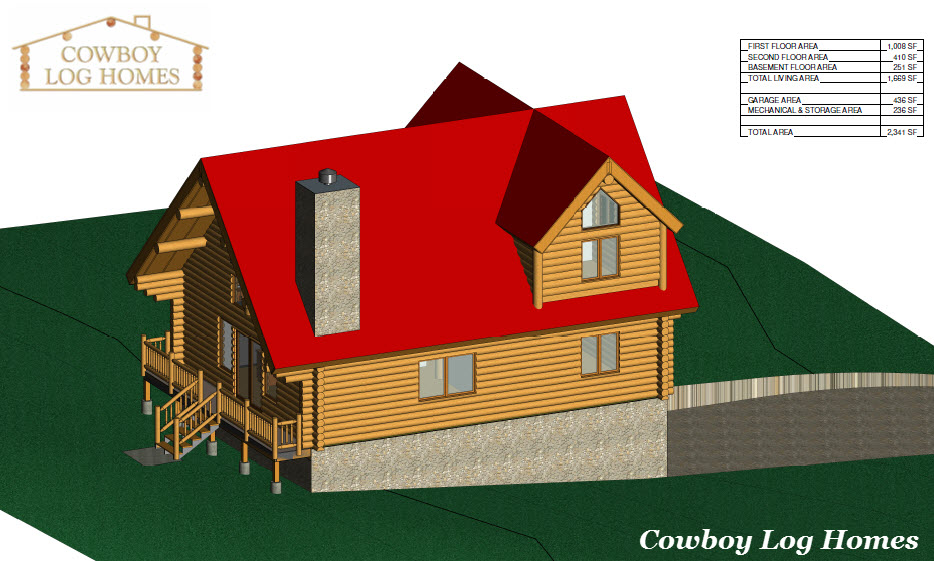A very common question we are asked is the current cost of a full turnkey solution for a log home in the Bozeman, Montana area. While labor and material costs fluctuate often in today’s, markets, we try to give an informed and reasonable guestimate for people planning to build in the 2023 construction season.
Turnkey Log Home Estimate for 2023
From talking with contractors both here and in neighboring states, as well as building costs for current projects we are involved in, we are currently seeing a full turnkey for a log home in the 1,500 to 2,5000 square foot range cost ranging approximately between $325 to $350 per square foot of living space. The home can be placed on whatever foundation you prefer. A cement slab is not the best option in Montana with the freezing and installation of plumbing. The majority of our homes are placed on either a 4′ crawl space or a full basement. The final roofing materials can be either shingles or metal. Metal roofing is the most common here. The turnkey pricing includes either option. A garage is not included in the $325-350 per square foot. A garage is calculated separately if you decide you want to build one.
What is a “Turnkey Solution” for a Log Home?
A Turnkey Solution focuses on the complete construction of your new log home from start to finish – but it does not include some jobsite-specific components that also must be planned and budgeted for (more about this in a minute). A full turnkey encompasses the excavation for the log home, foundation work, log package, log package erection, finishing of the exterior of the house, and all the labor and materials to completely finish the interior of the home.
Costs that are not included in a turnkey estimate include: the cost of the property, well, septic OR tieing into public utilities, bringing electricity to the lot, propane tanks, landscaping, garage, or driveway installation. These are all very jobsite specific and vary in cost depending on exactly where you are building and the exact property you decide to purchase.
First Step of Planning for a Log Home Build
The first step in the active planning phase — which ends with the construction of your home — begins with selecting the property where you want to build and purchasing it. Many decisions for your future home will be determined by the location of your property, views from the site, slope of the ground, and access to utilities.
Second Step of Planning for a Log Home Build
The second step of planning for your new log home is to visit a bank and get preapproved for a loan if you are planning to fiance your project. If you are doing all cash, it isn’t a bad idea to still visit a lender and see if you can get a line of personal line of credit incase you run short on funds for the construction. Even with careful planning, surprise costs can still pop up during the build. One time we ended up drilling an additional 200 feet to reach water for the well which doubled the well drilling cost. Another time we encountered boulders when we dug the foundation and we had to bring in a dynamite blaster from a local mine to blast the rock. So unusual things to happen and having some funds available is a good idea.
When going to a lender it is better to air on the side of caution and go with the higher number (for example $350 per square foot) for the construction of the home. With construction loans, it is important to remember that just because you are approved for a higher amount does not mean you have to spend it. When the construction of the home is completed, the lender writes a mortgage based on what was spent, not on what you were approved for.
Third Step of Planning for a Log Home Build
After the land is purchased and you have figured out your financing, the next step is to design your home. There are two ways to go about this process. One is to choose a stock floor plan from our log home plans and then modify it to meet your needs. The other option is to have us design a custom plan for you. Either method works well. It simply depends on what your goals are. At this phase of planning often people like to purchase a design contract with us first and work through the design process. Then we use those plans to build out the budget for the construction costs of your home. When we are working from customized plans our cost estimates are more accurate than a general cost per square foot like we provided above in this article. And rest assured that any funds that you pay upfront for designs are deducted from your log package price when you order your log home. (The cost of the log home package is included in the total turnkey estimates of $325 to $350 per square foot.)

Step Four in Planning for a Log Home Build
Once we have drafted a set of preliminary plans we are able to start the more accurate costs for the construction of your home based on your exact plan and also customized to your building lot. The main components that go into the total construction cost figuring are the cost of the property (if you do not already own it), construction of the log home, any required permits, utilities, garage or other outbuildings, and a driveway.
If your lot is located with access to public utilities, then there is simply a fee you pay the municipality to tie into the utilities. This could cost roughly $8,000 to $10,000 but does vary depending on the city or town where you are building. If there are no public utilities then you will need to consider drilling a well, having a water pump system installed, installing a septic system, burying a propane tank, and bringing electricity to the job site. If the property is off of the grid then alternative power like solar panels or wind power has to be considered in the budget.
Step Five in Planning for a Log Home Build
Plan ahead! That is definitely number 5. . It is best to start on designs after you have purchased your property, as many design decisions will be influenced and impacted by the exact property you choose. It usually takes about 9 months to build a log home and can extend to 12. A turnkey we did just outside of Gallatin Gateway took us 10 1/2 months from start to finish and it was 1700 square feet with an attached garage.
We have many options to choose from for the log size and the style of logs or timbers for your home. The larger the log size the more expense. Our most economic log is a 6×8 D log and we can go up to a 12-inch log in either a D-log or a round log provide. If you come across any photos that are similar to what you are interested in we are happy to look at them and incorporate any ideas into your project. The standard floor plans on our website are offered to provide ideas. Most owners start with one of them and then make changes from there. The smallest plan that we offer in the 3 bedroom, 2 bath, with an open balcony/loft is the Bridger Plan. Other popular plans are the Madison, Eureka, and Sierra plans. I am attaching some pdf files for you of these plans. We also can do an entire custom plan. There is no difference in cost. We simply want to insure that we design to meet your wants for this log home.
We look forward to helping you as you plan your log home build!




